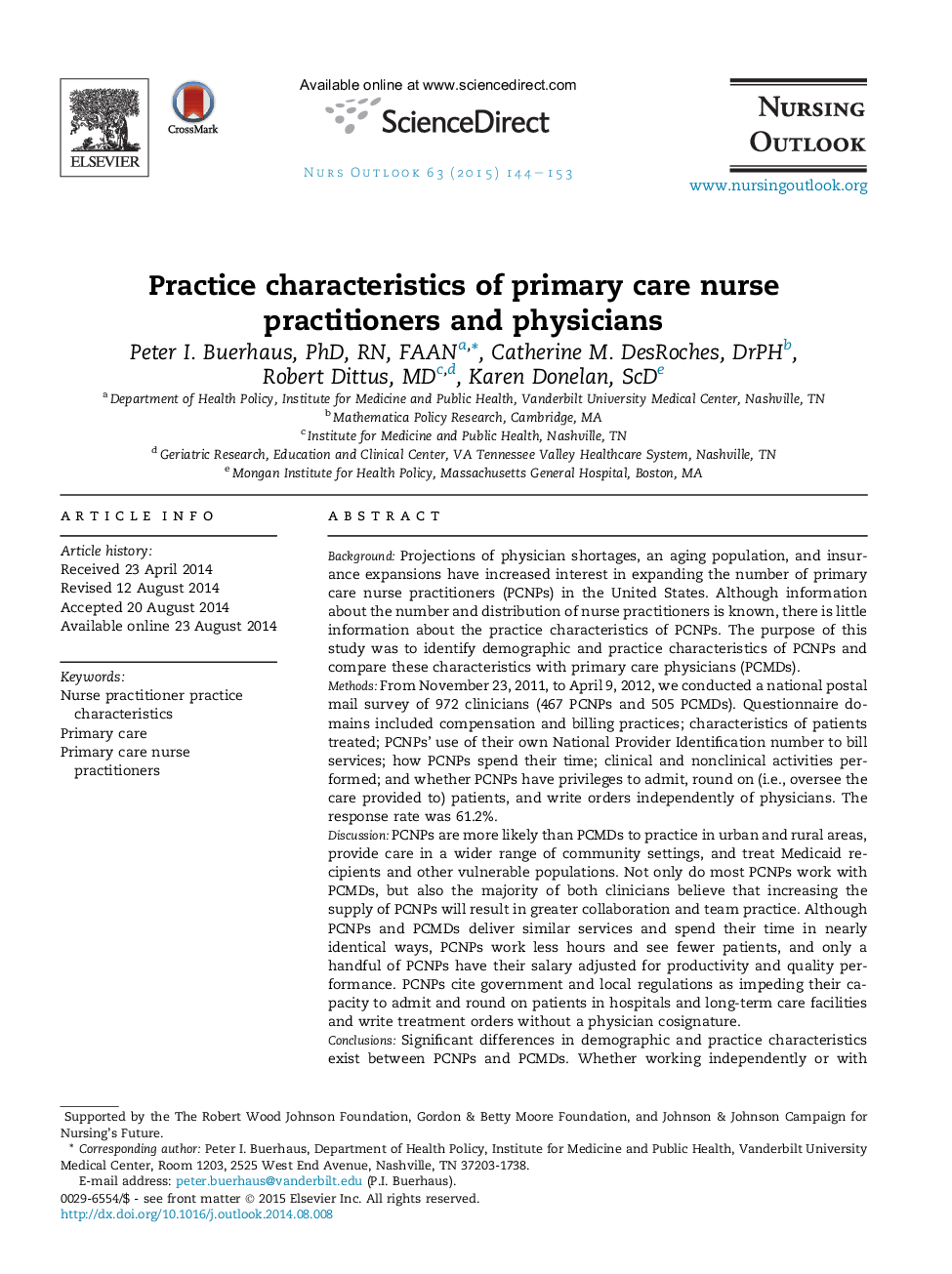| کد مقاله | کد نشریه | سال انتشار | مقاله انگلیسی | نسخه تمام متن |
|---|---|---|---|---|
| 2672117 | 1141470 | 2015 | 10 صفحه PDF | دانلود رایگان |
BackgroundProjections of physician shortages, an aging population, and insurance expansions have increased interest in expanding the number of primary care nurse practitioners (PCNPs) in the United States. Although information about the number and distribution of nurse practitioners is known, there is little information about the practice characteristics of PCNPs. The purpose of this study was to identify demographic and practice characteristics of PCNPs and compare these characteristics with primary care physicians (PCMDs).MethodsFrom November 23, 2011, to April 9, 2012, we conducted a national postal mail survey of 972 clinicians (467 PCNPs and 505 PCMDs). Questionnaire domains included compensation and billing practices; characteristics of patients treated; PCNPs' use of their own National Provider Identification number to bill services; how PCNPs spend their time; clinical and nonclinical activities performed; and whether PCNPs have privileges to admit, round on (i.e., oversee the care provided to) patients, and write orders independently of physicians. The response rate was 61.2%.DiscussionPCNPs are more likely than PCMDs to practice in urban and rural areas, provide care in a wider range of community settings, and treat Medicaid recipients and other vulnerable populations. Not only do most PCNPs work with PCMDs, but also the majority of both clinicians believe that increasing the supply of PCNPs will result in greater collaboration and team practice. Although PCNPs and PCMDs deliver similar services and spend their time in nearly identical ways, PCNPs work less hours and see fewer patients, and only a handful of PCNPs have their salary adjusted for productivity and quality performance. PCNPs cite government and local regulations as impeding their capacity to admit and round on patients in hospitals and long-term care facilities and write treatment orders without a physician cosignature.ConclusionsSignificant differences in demographic and practice characteristics exist between PCNPs and PCMDs. Whether working independently or with PCMDs, increasing the number of PCNPs can be expected to expand access to primary care, particularly for vulnerable populations, and for those gaining access to health insurance through the Affordable Care Act.
Journal: Nursing Outlook - Volume 63, Issue 2, March–April 2015, Pages 144–153
